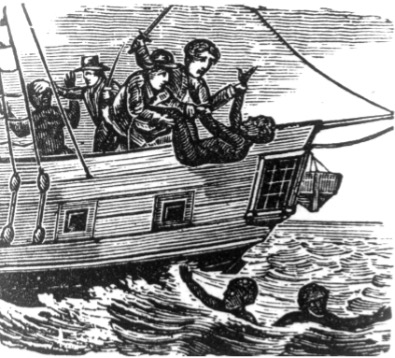History of 19-23 Abercromby Square
Panel 6: Inherence, wealth and disease
The African Company of Merchants was managed by the African Committee, which was composed of nine committee members, three each from London, Liverpool, and Bristol. These were elected from the general body of traders from these cities, who paid 40 shillings to be admitted to the company. The company was financed by an annual grant approved by Parliament, which covered the costs of the London office and the forts. The committee had to report to the Exchequer, the Admiralty, and, from 1782, the Secretary at War. The government prohibited the African slave trade after 1807, although the company continued to operate for some years afterward.
Two slave ships in Britain entered the legal case books. The first was the Brookes, the second, Zong, are recognisable for demonstrating what it meant to treat human beings as cargo. The ship left West Africa in 1781 carrying several hundred enslaved people for sale in the West Indies. The Ship’s Captain, Luke Collingwood, made several navigation errors and missed the port at Jamaica. With what was presumed to be dysentery, some of the crew and many of the enslaved people became ill, while freshwater levels dropped. Collingwood made the decision to kill over 130 of the enslaved by having them shackled and thrown alive into the ocean.
On return to Britain, the ships owners, claimed the lives of those murdered onboard on their insurance. The insurance companies refused to pay, and a lawsuit began which was brought to the attention of the public by Granville Sharp, a leading abolitionist and researcher on slavery in British law. Newspapers recorded the events and the Lord Chief Justice, the Earl of Mansfield, found for the insurers. The effects of the case on abolition were not immediate, but by 1787 Sharp had helped establish the ‘Society for the Abolition of the Slave Trade’ in Britain. The Case family inheritance was eventually given as a bequest in 1898 to the Hibbert Trust for the promotion of liberal religion.

Fig 6.1 Charles Pole’s tomb. His father Charles Pole senior was the commissioner of the African Company of Merchants (Photography by Chris William).

Fig 6.2 The Zong, a replica of an 18th century wooden square rigger used as a Slave ship (Nic Hamilton Photographic / Alamy Stock Photo)

Fig 6.3 Enslaved people were thrown overboard from an unidentified slave ship, 1832 (Wiki commons)
Link: National Museums Liverpool: George Case
https://www.liverpoolmuseums.org.uk/artifact/george-case-mayor-of-liverpool
References
Burrell, Sean & Gill, Geoffrey. (2005). The Liverpool Cholera Epidemic of 1832 and Anatomical Dissection--Medical Mistrust and Civil Unrest. Journal of the history of medicine and allied sciences. 60. 478-98.
The Hibbert Trust. History of the Trusts. Statement of Trustees - Hibbert Trust and Slavery. The Hibbert Trust. https://www.thehibberttrust.org.uk/about-us/history
Jenkinson, H. (1912). The Records of the English African Companies. Transactions of the Royal Historical Society, 6, 185–220.
Krikler, J. (2007). The Zong and the Lord Chief Justice. History Workshop Journal, 64, 29 - 47.
Mary M. Drummond (1964). Pole, Charles (1695-1779) of Holcroft, Lancashire. The History of Parliament: the House of Commons, 1754-1790. https://www.historyofparliamentonline.org/volume/1754-1790/member/pole-charles-1695-1779
Neal, F. (1995). Lancashire, The Famine Irish and the Poor Laws: A Study in Crises Management. Irish Economic and Social History, 22, 26–48.